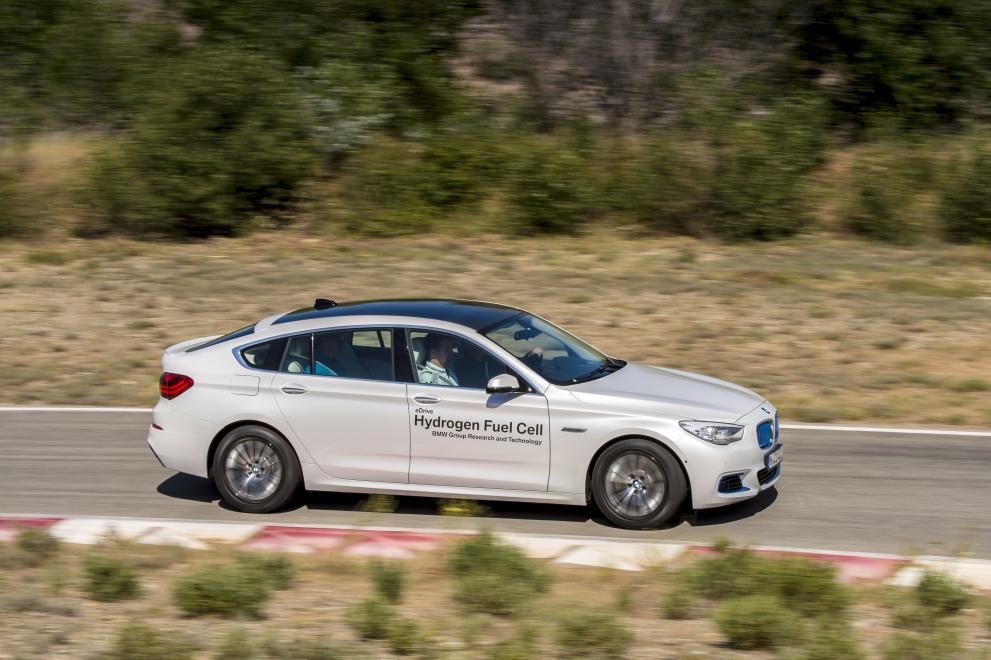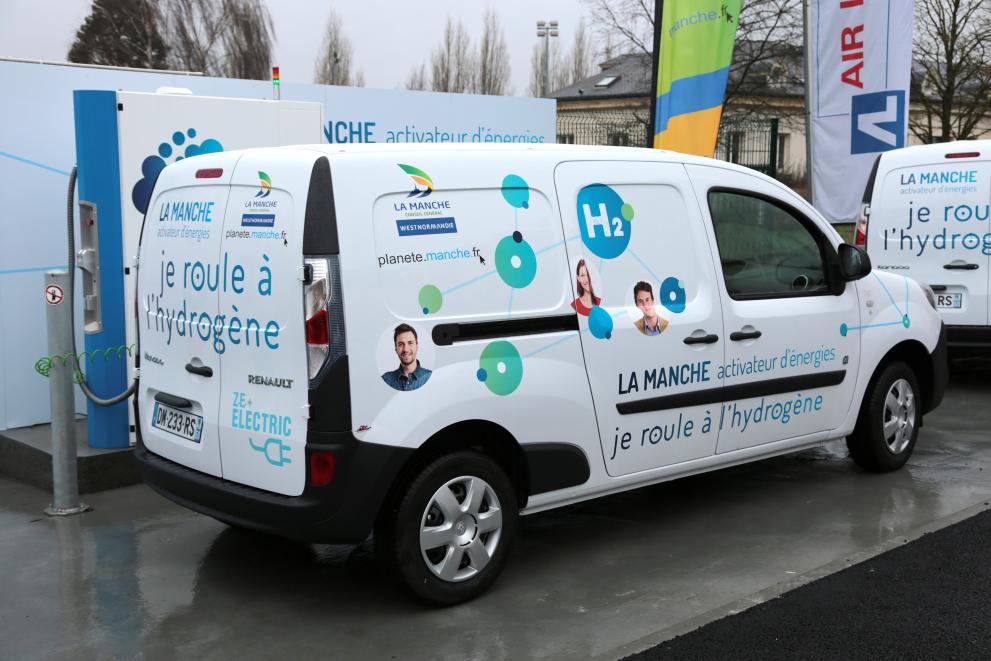
A clean revolution is quietly taking place on Europe’s roads. Hydrogen fuel cells are powering fleets of public buses and refueling stations are being deployed. Building on the results of several pilot projects, uptake of the technology is accelerating rapidly, putting hydrogen fuel cells in a position to underpin zero-emissions transport Europe-wide.
There has been an enormous leap forward recently in terms of the technology, cost and infrastructure, and it is a trend that will undoubtedly accelerate over the coming years.
Five years ago there were about 30 buses in European cities running on hydrogen, today there are 90, and that number is set to at least double in the next year thanks to projects supported by the FCH JU. Likewise, the number of refuelling stations is set to rise, and is expected to increase from about 20 today to more than 50 in the next couple of years. Meanwhile, several car manufacturers have gone from testing hydrogen fuel cell electric vehicles (FCEVs) to producing them commercially.
The trend is being driven by growing demand among citizens and decision-makers for efficient, clean transport solutions that reduce urban air pollution, lower dependence on fossil fuels and minimise carbon dioxide emissions. And it is being powered by a technology that can provide improved performance and equivalent convenience, range and refueling time to petrol and diesel-powered vehicles at a fraction of the environmental cost.
Stored in vehicles in a tank just like petrol or diesel, hydrogen is used in an electrochemical energy conversion process with oxygen in fuel cells to generate electricity to drive the power train. A similar electrochemical process is used to produce electricity from batteries. But while a battery will lose its charge over time, a fuel cell will continue to work so long as it has hydrogen and oxygen flowing into it. Water is the only emission.
In addition to the environmental advantages of hydrogen fuel cell technology over conventional fossil fuel engines, the energy efficiency of a fuel cell is typically between 40 %and 60 %, compared with an average of 25 %for a petrol engine. With respect to battery-powered electric vehicles, hydrogen fuel cell technology has two key practical advantages : extended range and no lengthy recharging time. FCEVs on the market today can travel up to 700km on a single tank, and can refuel in minutes as opposed to being recharged for hours.
FCH JU Transport projects
In HyFIVE, for example, five leading car manufacturers, infrastructure providers and other partners are deploying 185 hydrogen fuel cell vehicles across Europe as well as refuelling stations. Likewise, the H2ME project will set up 29 refueling stations – mostly in Germany – and will place 200 cars and 125 range-extended vans on the road. The project recently opened its first hydrogen refueling station in Denmark, and is planning a network of stations that will produce hydrogen from water electrolysis using electricity generated from renewable and carbon-neutral sources to create the first 100 %sustainable and zero-emission hydrogen supply – the highest share in the world for an entire station network.
Once complete, projects such as HyFIVE and H2ME should allow an FCEV driver to travel from Sweden to Italy or from the UK to Austria without worrying about where to refuel.
By deploying FCEVs and refuelling stations in key regions, we are planting the seeds that will gradually spread the use of hydrogen for transport across Europe. It will address the so-called "chicken and egg" situation, where there is no first-mover advantage to building refueling stations if there are not enough cars on the road to support them.


In addition to more accessible infrastructure, lower prices for FCEVs should also contribute to demand. FCEVs now cost around EUR 70 000 and are increasingly price-competitive with high-end combustion engine vehicles. The cost of fuel cells has declined by more than 80 %over the last five years, and as research continues and economies of scale improve the price of FCEVs should continue to fall.
Inside cities, the deployment of hydrogen-powered buses for urban public transport is also becoming widespread. Cities such as Aberdeen, Antwerp, Cologne, London, Oslo and Rome are all gaining fleets of fuel cell buses thanks to FCH JU projects such as CHIC, High V.LO-City, HyTransit and 3EMOTION. These and earlier projects are proving the practicality, reliability and safety of hydrogen-powered vehicles: around 40 buses and 100 cars used in EU-funded trials have already travelled more than 9.6 million kilometres and refuelled more than 1.1 million kilograms of hydrogen. The upshot of these projects alone is that around 14 200 tonnes of CO2 emissions have been avoided assuming half of the hydrogen fuel was generated using renewable energy.
In urban areas, in particular, increasing restrictions on the use of polluting combustion-engine vehicles are set to increase demand for FCEVs and fuel cell buses. At a broader level, lowering carbon dioxide emissions limits to less than 95 grams of CO2/km for all cars in the EU from 2020 could encourage many manufacturers to turn to hydrogen technology.
Regulatory factors will be a clear driver of uptake, and we can envision the European transport sector changing dramatically as a result over the next decade.
Over the same period, efforts will intensify to switch from mostly producing hydrogen from natural gas to producing it through water-based electrolysis powered by renewable energy, resulting in a transport system that is truly CO2-emissions free.
Article source: European Commission, Research & Innovation Information center,read the full article here
Details
- Publication date
- 29 August 2016
